
Natural Variation in the Amylose Content of Starch
Plant Physiology, Plant Physiology: On The InsideStarch is the major storage carbohydrate in plants. It occurs as semi-crystalline, insoluble granules consisting of two Glc polymers: amylopectin and amylose. Amylopectin, the major polymer, gives rise to the semi-crystalline matrix of the granule. Amylose is believed to reside in amorphous regions…

Recognizing Plant Physiology authors: Freddy Bunbury
Plant Physiology, Plant Physiology: Author ProfilesFreddy Bunbury, first author of Physiological and Molecular Responses of a Newly Evolved Auxotroph of Chlamydomonas to B12 Deprivation
Current Position: Postdoctoral Fellow in the labs of Arthur Grossman and Devaki Bhaya at the Carnegie Institution for Science at Stanford
Education: BA in Plant Biology…
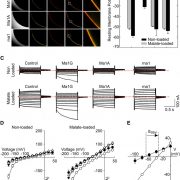
Malate Transport and Apple Tartness
Plant Physiology, Plant Physiology: On The InsideAcidity is a major contributor to apple (Malus domestica) fruit quality, including fruit overall taste and flavor. Organic acids collectively are responsible for acidity, but malic acid accounts for more than 90% of the total acid and largely controls apple fruit acidity. Most of the malic acid in apple…
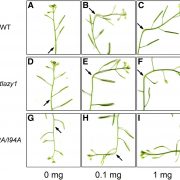
How to Make a LAZY Plant Weep
Plant Physiology, Plant Physiology: On The InsideThe LAZY gene family, discovered through the characterization of a rice (Oryza sativa) mutant with unusually wide tiller angles, encodes proteins that function in gravitropism. Gravitropism begins with a perception process that ultimately causes a difference in the cell elongation rate across the…

Variation in xylem resistance to cavitation explains why some leaves within a canopy are more likely to die under water stress
Plant Physiology, Plant Physiology: News and Views, ResearchMeisha Holloway-Phillips
Department of Environmental Sciences, University of Basel, Switzerland
[email protected]
When trees are subjected to soil water deficits, some leaves and branches show signs of stress or die before others in the canopy. Why is that? Here I highlight recent…
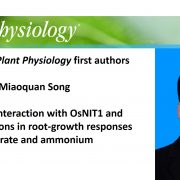
Recognizing Plant Physiology authors: Miaoquan Song
Plant Physiology, Plant Physiology: Author ProfilesMiaoquan Song, first author of OsNAR2.1 interaction with OsNIT1 and OsNIT2 functions in root-growth responses to nitrate and ammonium
Current Position: PhD student of Nanjing Agriculture University
Education: 2013-2020, PhD student, College of Resources and Environmental Sciences, Nanjing Agricultural…
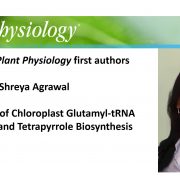
Recognizing Plant Physiology authors: Shreya Agrawal
Plant Physiology, Plant Physiology: Author ProfilesShreya Agrawal, first author of The Functions of Chloroplast Glutamyl-tRNA in Translation and Tetrapyrrole Biosynthesis
Current Position: Postdoctoral Research Fellow, Section of Biomolecular Sciences, Department of Biology, University of Copenhagen, Denmark
Education: Ph.D. in Plant Physiology,…
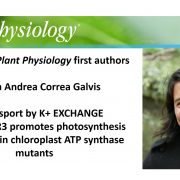
Recognizing Plant Physiology first authors: Viviana Andrea Correa Galvis
Plant Physiology, Plant Physiology: Author ProfilesViviana Andrea Correa Galvis, first author of H+ transport by K+ EXCHANGE ANTIPORTER3 promotes photosynthesis and growth in chloroplast ATP synthase mutants
Current Position: CropQuality Lead, Infarm
Education: PhD in Plant Biology, HeinrichHeine University Düsseldorf (HHU), Germany; M.Sc. in Biology,…
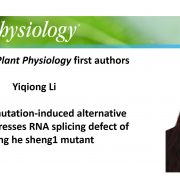
Recognizing Plant Physiology authors: Yiqiong Li
Plant Physiology, Plant Physiology: Author ProfilesYiqiong Li, first author of Secondary mutation-induced alternative splicing suppresses RNA splicing defect of the jing he sheng1 mutant
Current Position: Ph.D. student in Prof. Hongbo Gao’s laboratory, College of Biological Sciences and Biotechnology, Beijing Forestry University, Beijing, China
Education:…

